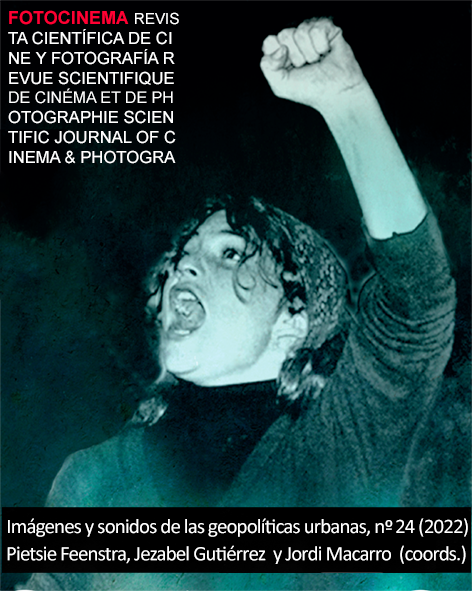The influence of the futuristic metropolis and the technologised city in Japanese animated films. Rintaro's Metropolis as a setting of frantic and fascinating narrative power
DOI:
https://doi.org/10.24310/Fotocinema.2022.vi24.13582Keywords:
Anime, Neo-Tokyo, Cyberpunk, Megalopolis, Post-Apocalypse, AndroidAbstract
Abstract:
On the basis of the japanese animation model, with its consequent features and symbolisms and its cultural idiosyncrasies, a research will be carried out on the power that the city imposes on the animated film narrative. It will be approached from the perspective of a mainly qualitative analysis based on a method of studying the content of two concepts: post-apocalyptic and cybersociety in Rintaro's film Metropolis. The city, as the main character of the story, will allow us to examine the visual, aesthetic and thematic concepts that define and constitute the film. The case study of the influence of the futuristic metropolis and the technologised city in japanese animated film subjects brings the selected feature film to a procedure of narrative and visual references that, two decades after its release, has positioned Metropolis as one of the main anime products of cinematic exploration indispensable in the advancement of popular film culture.
Downloads
Metrics
Publication Facts
Reviewer profiles N/A
Author statements
Indexed in
-
—
- Academic society
- N/A
- Publisher
- Universidad de Málaga
Downloads
Published
How to Cite
Issue
Section
License
All contents published in Fotocinema Revista científica de cine y fotografía are protected under the Creative Commons Attribution-NonCommercial-ShareAlike 4.0 International (CC BY-NC-SA 4.0) license. All about this license is available in the following link: <http://creativecommons.org/licenses/by-nc-sa/4.0>
Users can copy, use, redistribute, share and exhibit publicly as long as:
- The original source and authorship of the material are cited (Journal, Publisher and URL of the work).
- It is not used for comercial purposes.
- The existence of the license and its especifications are mentioned.
There are two sets of authors’ rights: moral and property rights. Moral rights are perpetual prerogatives, unrenounceable, not-transferable, unalienable, imprescriptible and inembargable. According to authors’ rights legislation, Fotocinema. Revista científica de cine y fotografía recognizes and respects authors moral rights, as well as the ownership of property rights, which will be transferred to University of Malaga in open access. The property rights are referred to the benefits that are gained by the use or the dissemination of works. Fotocinema. Revista científica de cine y fotografía is published in an open access form and it is exclusively licenced by any means for doing or authorising distribution, dissemination, reproduction, , adaptation, translation or arrangement of works.
Authors are responsable for obtaining the necessary permission to use copyrighted images.














13.png)



